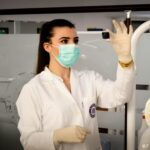 Individuals with urea cycle disorders (UCDs) often present with intellectual and developmental disabilities. The major aim of this study was to evaluate the impact of diagnostic and therapeutic interventions on cognitive outcomes in UCDs..The mean cognitive standard deviation score (cSDS) was lower in symptomatic than in asymptomatic individuals with UCDs. In ornithine transcarbamylase and argininosuccinate synthetase 1 deficiencies, we did not find evidence that monoscavenger therapy with sodium or glycerol phenylbutyrate was superior to sodium benzoate in providing cognitive protection. Early liver transplantation appears to be beneficial for UCDs. It is noteworthy that individuals with argininosuccinate synthetase 1 and argininosuccinate lyase deficiencies identified by newborn screening had better neurocognitive outcomes than those diagnosed after the manifestation of first symptoms. Cognitive function is related to interventional and non-interventional variables. Early detection by newborn screening and early liver transplantation appear to offer greater cognitive protection, but none of the currently used nitrogen scavengers was superior with regard to long-term neurocognitive outcome. For more information click here.
Individuals with urea cycle disorders (UCDs) often present with intellectual and developmental disabilities. The major aim of this study was to evaluate the impact of diagnostic and therapeutic interventions on cognitive outcomes in UCDs..The mean cognitive standard deviation score (cSDS) was lower in symptomatic than in asymptomatic individuals with UCDs. In ornithine transcarbamylase and argininosuccinate synthetase 1 deficiencies, we did not find evidence that monoscavenger therapy with sodium or glycerol phenylbutyrate was superior to sodium benzoate in providing cognitive protection. Early liver transplantation appears to be beneficial for UCDs. It is noteworthy that individuals with argininosuccinate synthetase 1 and argininosuccinate lyase deficiencies identified by newborn screening had better neurocognitive outcomes than those diagnosed after the manifestation of first symptoms. Cognitive function is related to interventional and non-interventional variables. Early detection by newborn screening and early liver transplantation appear to offer greater cognitive protection, but none of the currently used nitrogen scavengers was superior with regard to long-term neurocognitive outcome. For more information click here.
Publications
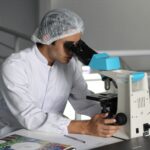 There are approximately 7 000 rare diseases affecting 25-30 million Americans, with 80% estimated to have a genetic basis. This presents a challenge for genetics practitioners to determine appropriate testing, make accurate diagnoses, and conduct up-to-date patient management. Exome sequencing (ES) is a comprehensive diagnostic approach, but only 25%-41% of the patients receive a molecular diagnosis. The remaining three-fifths to three-quarters of patients undergoing ES remain undiagnosed. The Stanford Center for Undiagnosed Diseases (CUD), a clinical site of the Undiagnosed Diseases Network, evaluates patients with undiagnosed and rare diseases using a combination of methods including ES. Frequently these patients have non-diagnostic ES results, but strategic follow-up techniques identify diagnoses in a subset. We present techniques used at the CUD that can be adopted by genetics providers in clinical follow-up of cases where ES is non-diagnostic. Solved case examples illustrate different types of non-diagnostic results and the additional techniques that led to a diagnosis. Frequent approaches include segregation analysis, data reanalysis, genome sequencing, additional variant identification, careful phenotype-disease correlation, confirmatory testing, and case matching. We also discuss prioritization of cases for additional analyses. For more information read the full article here.
There are approximately 7 000 rare diseases affecting 25-30 million Americans, with 80% estimated to have a genetic basis. This presents a challenge for genetics practitioners to determine appropriate testing, make accurate diagnoses, and conduct up-to-date patient management. Exome sequencing (ES) is a comprehensive diagnostic approach, but only 25%-41% of the patients receive a molecular diagnosis. The remaining three-fifths to three-quarters of patients undergoing ES remain undiagnosed. The Stanford Center for Undiagnosed Diseases (CUD), a clinical site of the Undiagnosed Diseases Network, evaluates patients with undiagnosed and rare diseases using a combination of methods including ES. Frequently these patients have non-diagnostic ES results, but strategic follow-up techniques identify diagnoses in a subset. We present techniques used at the CUD that can be adopted by genetics providers in clinical follow-up of cases where ES is non-diagnostic. Solved case examples illustrate different types of non-diagnostic results and the additional techniques that led to a diagnosis. Frequent approaches include segregation analysis, data reanalysis, genome sequencing, additional variant identification, careful phenotype-disease correlation, confirmatory testing, and case matching. We also discuss prioritization of cases for additional analyses. For more information read the full article here.
 In this study the authors investigate foetal and maternal pregnancy outcomes from a large multicentre cohort of women diagnosed with MCTD and anti-U1RNP antibodies. This multicentre retrospective cohort study describes the outcomes of 203 pregnancies in 94 consecutive women ever pregnant who fulfilled the established criteria for MCTD with confirmed U1RNP positivity. In the multicentre cohort, women with MCTD had a live birth rate of 72%. While the true frequency of heart block associated with anti-U1RNP remains to be determined, this study might raise the consideration of echocardiographic surveillance in this setting. Pregnancy counselling should be considered in women with MCTD. To read the full article, please click here.
In this study the authors investigate foetal and maternal pregnancy outcomes from a large multicentre cohort of women diagnosed with MCTD and anti-U1RNP antibodies. This multicentre retrospective cohort study describes the outcomes of 203 pregnancies in 94 consecutive women ever pregnant who fulfilled the established criteria for MCTD with confirmed U1RNP positivity. In the multicentre cohort, women with MCTD had a live birth rate of 72%. While the true frequency of heart block associated with anti-U1RNP remains to be determined, this study might raise the consideration of echocardiographic surveillance in this setting. Pregnancy counselling should be considered in women with MCTD. To read the full article, please click here.
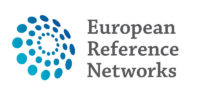 The animation clip below is an information video about the European Reference Networks (ERN), released by The European Commission for patients and their health professionals. In the clip is explained what is the ERN, how does it work, how can it help and other relevant information. Under the video you will find the link to the website of the European Commission, where the clip is uploaded.
The animation clip below is an information video about the European Reference Networks (ERN), released by The European Commission for patients and their health professionals. In the clip is explained what is the ERN, how does it work, how can it help and other relevant information. Under the video you will find the link to the website of the European Commission, where the clip is uploaded.
 Reimbursement of innovative anti-cancer medicines is of
Reimbursement of innovative anti-cancer medicines is of
particular interest for health policy makers and for the public in
general. On the one hand, this is due to the high unmet health needs
and inequalities. On the other, this is because of the considerable
costs and financial burden for patients, hospitals and payers. This
complex problem is addressed in a number of ways in different
countries. Special attention should be paid to the UK. One of the
main mechanisms for access to innovative anti-cancer medicines is
the Cancer Drugs Fund. The critical analysis of this experience could
be useful in improving and optimising assessment and appraisal of
innovative health technologies in Bulgaria.
The whole article you can read on the latest issue of our journal “Rare diseases and orphan drugs” here.
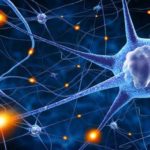 Neuroendocrine tumours (NETs) are a heterogeneous group of neoplasms regarding their molecular biology, clinical behaviour, prognosis and response to therapy. Several attempts to establish robust predictive biomarkers have failed. Neither tissue markers nor blood borne ones have proven to be successful yet. Circulating tumour cells (CTCs) as “liquid biopsies” could provide prognostic information at the time a therapeutic decision needs to be made and could be an attractive tool for tumour monitoring throughout the treatment period. However, “liquid biopsies” are far from becoming the standard biomarker in NETs. Further information you can find here.
Neuroendocrine tumours (NETs) are a heterogeneous group of neoplasms regarding their molecular biology, clinical behaviour, prognosis and response to therapy. Several attempts to establish robust predictive biomarkers have failed. Neither tissue markers nor blood borne ones have proven to be successful yet. Circulating tumour cells (CTCs) as “liquid biopsies” could provide prognostic information at the time a therapeutic decision needs to be made and could be an attractive tool for tumour monitoring throughout the treatment period. However, “liquid biopsies” are far from becoming the standard biomarker in NETs. Further information you can find here.
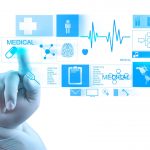
The Italian neuromuscular disease (NMD) registry is based on an informatics technology platform, structured according to the most rigorous legal national and European requirements for management of patient sensitive data. A user-friendly web interface allows both direct patients and clinicians’ participation. The platform’s design permits expansion to incorporate new modules and new registries, and is suitable of interoperability with other international efforts.
All stakeholders participate in its management, with clear roles and responsibilities. This governance model has been key to its success. In fact, it favored patient empowerment and their direct participation in research, while also engaging the expert clinicians of the Italian network in the collection of accurate clinical data according to the best clinical practices. The whole article you can find here.
A group of parents of children and women with Turner syndrome gathered together in a patient association to exchange experiences, ideas and mutual assistance in the fight against the disease. Turner syndrome is a chromosomal disorder associated with the complete or partial absence of an X chromosome. To support patients suffering from the disease in Bulgaria, the organization translates the book “Turner Syndrome – Know Your Body!” which is the result of the intense interest of many researchers from Europe and the US to girls and women with Turner Syndrome. You can find the book here.
The new issue 2 for 2018 of our journal “Rare Diseases and Orphan Drugs” is already published. You can find it on the website of the journal.
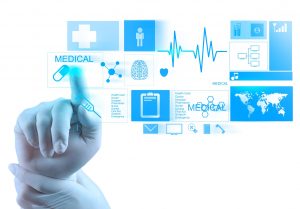 On 24.02.2018, the Institute for Rare Diseases hosted а Тraining workshop on health technology assessment – post-marketing surveillance and performance-based payment of innovative therapies, which was held in Landmark Creek Hotel – Plovdiv. During the day, interesting topics were presented by leading experts in the field such as Prof. Dan Greenberg (Israel), Dr. Edmund Jessop (UK), Prof. Ranganath Lakshminarayan (UK), Mr. Francis Arickx (Belgium), Prof. Rumen Stefanov (Bulgaria) and Dr. Borislav Borissov (Bulgaria). Speakers presented their experience and good practices for implementation of innovative pharmaceuticals and medical therapies. All presentations from the training workshop can be downloaded from here.
On 24.02.2018, the Institute for Rare Diseases hosted а Тraining workshop on health technology assessment – post-marketing surveillance and performance-based payment of innovative therapies, which was held in Landmark Creek Hotel – Plovdiv. During the day, interesting topics were presented by leading experts in the field such as Prof. Dan Greenberg (Israel), Dr. Edmund Jessop (UK), Prof. Ranganath Lakshminarayan (UK), Mr. Francis Arickx (Belgium), Prof. Rumen Stefanov (Bulgaria) and Dr. Borislav Borissov (Bulgaria). Speakers presented their experience and good practices for implementation of innovative pharmaceuticals and medical therapies. All presentations from the training workshop can be downloaded from here.
